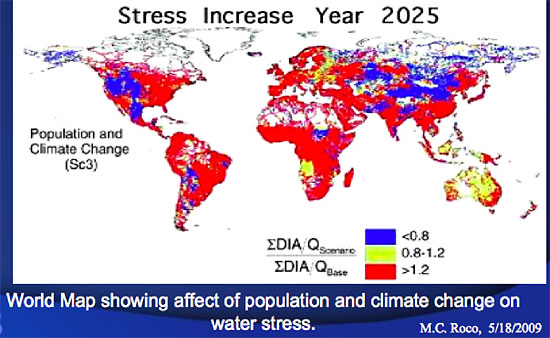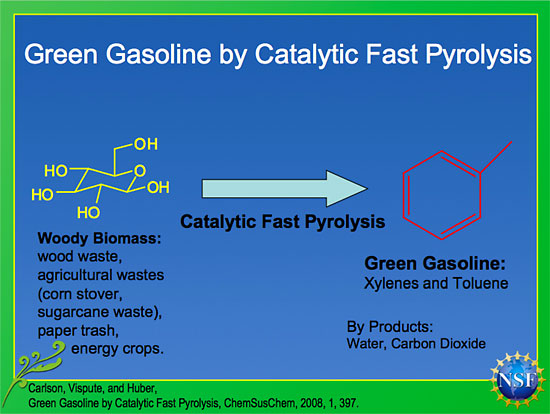Some science fiction stories, like Michael Crichton’s novel Prey, portray nanotechnology as leading to developments that can destroy the world, but some of the presenters at this year’s International Nanotechnology Conference for Communication and Collaboration (INC5) told a story that was quite the opposite. The world, or at least humanity, is already on a path toward destruction and nanotechnology may be the only hope to save it.
According to Mihail Roco, of the National Science Foundation and the National Nanotechnology Initiative, "every major ecosystem is under threat at different time scales: food, water, risk of climate change, energy, biodiversity, and mineral resources. Sooner or later, the earth will come into equilibrium." "Will humans be part of the new earth equilibrium?" he asks and "If they are, will it be a comfortable place?"
With 1.1 billion people already at risk for lack of clean water in 2008, Roco reports that, as a result of population growth and climate change, the situation is predicted to be disastrous worldwide by 2025 if solutions are not found. Red areas in the map below show parts of the world in which the need for water will greatly exceed the supply.

Not only is the environment in stress, but worldwide health systems are also challenged. Larry Nagahara, of the National Institutes of Health, presented projections that by 2025 there will be 2 million new cases of cancer each year worldwide.
These are just two examples of catastrophic problems that scientists hope to overcome with nanotechnology. The National Institutes of Health has eight Centers for Cancer Nanotechnology Excellence and more that deal with other applications of nanotechnology. Societal and environmental implications is one of four major priority areas for NSF nanoscale research and development, with themes focused on sustainable development, energy, water, clean environment, food, and climate.
One example of research NSF is supporting is on the development of "green" gasoline enabled by new catalytic processes that rapidly turn woody biomass and agricultural wastes into fuels whose only by-products are water and carbon dioxide.

At the INC5 meeting, Masatoshi Iji, of NEC in Japan, spoke about highly functional, biomass-based plastics. Chemming Hu of UC-Berkeley spoke about "green" transistors that reduce the power need in electronics to one-tenth of the amount currently needed. Kohmei Halada, of the National Institute for Materials Science in Japan, spoke about nano-alchemy relieving the materials resource crisis.
Nanotechnology is the focal point for potential solutions to many of the world’s current and future problems. But will it create new problems of its own? New technologies almost always do. According to Jeff Morris, of the Environmental Protection Agency, "very little is known about nanomaterials’ toxicity and exposure: we are just starting to develop methods to test them." Will the hope for solving the world’s problems with nanotechnology or the fear of creating significant new ones win out in the minds of the public and government policymakers?
Shuji Abe, of the National Institute of Advanced Industrial Science and Technology in Japan, says "There is a need to find a new scheme of constructive technology assessment and management, for constant reviewing and prioritization based on risks, benefits, costs, long-term strategies, and public opinions." NISE Net is considered part of the societal implications work of the National Nanotechnology Initiative because of its role in informing public opinions.
